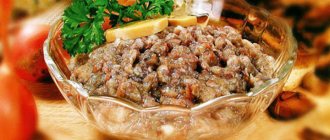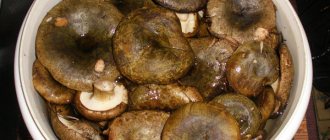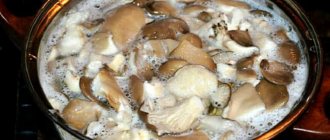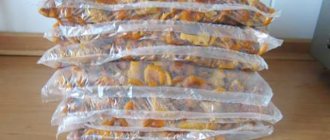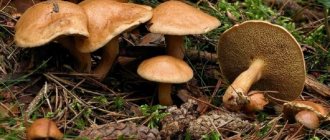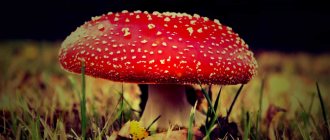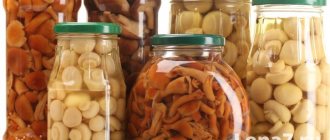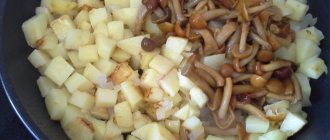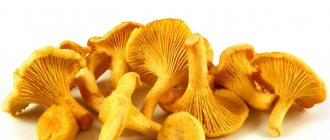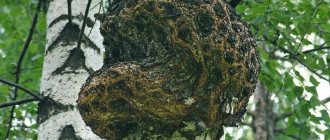In the autumn, many lovers of quiet hunting replenish their supplies by pickling, salting and drying their forest catch, because such preparations are in no way inferior in taste to fried or baked mushrooms, being an excellent appetizer for both everyday and festive feasts. And really, what could be tastier than a strong salted mushroom with potatoes, herring and green onions? But bad luck, even the most tidy owners often end up with such pickles becoming moldy and subsequently having to be disposed of.
Why does mold appear in jars of salted mushrooms?
Mold appears on salted mushrooms for several reasons. Most often, the development of microorganisms is provoked by the following factors:
- the container is not clean enough (the jar or pan must not only be washed, but also sterilized);
- insufficient amount of salt, spices (preparations must be made in full accordance with proven recipes, observing all proportions);
- availability of free space in the jar (the container must be completely filled with brine, otherwise the remaining air will contribute to the growth of mold);
- storage under unsuitable conditions (in a warm room and in bright lighting, mold fungi develop much more actively).
Mushrooms
Also among the reasons are the use of raw materials already contaminated with mold spores, or insufficient cleaning of mushrooms before salting or pickling.
Procedure after detecting mold
Many housewives have encountered such a nuisance, and therefore they know well how to overcome mold on mushrooms and, if possible, save the product. And if the degree of damage to the salted mushrooms is small and the mold does not look dangerous, then there is no need to throw out the dish. But it is also not recommended to sit idly by - mold that forms on pickled mushrooms can significantly spoil the taste of the pickles, making it completely unsuitable for food. For this reason, as soon as you notice the first signs of mold, we advise you to take a few immediate steps:
- If the pickling was done in a tub or other large container, carefully treat the container itself, weight, flap, wooden circle or dish that is placed directly on the surface of the pickled mushrooms to completely disinfect them. Treatment consists of thorough rinsing with hot water, and then literally with boiling water. After this, all these items can be placed as expected.
- To remove mold that has formed, you need to do the following:
- inspect and check how badly the product has been damaged;
- if the surface of the salted fungi is slightly moldy, the mold appears only on top and there are no signs of its deep penetration inside, you should carefully remove the surface layer of the salting and pour out all the brine;
- The mushrooms remaining in the container, from which you have removed the mold, must be thoroughly rinsed, boiled in fresh water, and then drained.
- On a weekly basis, after the processed pickling is sent to the pantry, repeat the following sequential operations:
- remove the weight, dish or wooden circle and pour out the top layer of brine;
- fill the container with fresh water, let it stand for five minutes, and also pour it out;
- Be sure to wipe the inside of the upper part of the walls of the container. To do this, use a piece of clean rag on which you apply a little vinegar;
- prepare a fresh saline solution (a tablespoon of salt per liter of water) and place the load in its original place; you must first disinfect it and the installation site.
- A good “flavor” helps after such processing: put a few cloves of garlic, dill sprigs with seeds, and some horseradish leaves in the pickle.
- If you salt mushrooms in jars, prepare a clean and sterilized glass container, place the mushrooms in it in layers, successively sprinkled with salt (the mushrooms will not absorb excess salt) and then fill with fresh hot brine (not boiling).
- Maintain a stable air temperature in the storage in the range of +1-+3°C.
If the mold is no longer only on the surface of the salted mushrooms, but has penetrated deeply enough and you feel its characteristic odor, then it will no longer be possible to get rid of it. It is much better to throw it all away without regret. Don't forget that if you eat these "risky" pickled mushrooms that have become moldy, you are likely to get serious food poisoning.
Types of mold on salted mushrooms
Today, about 100 thousand types of mold are known, caused by various fungi. The most common situation is when black or white mold appears on salted mushrooms.
Black mold is the most dangerous type. It looks like dark gray or black round spots. The microorganisms that cause its appearance are very tenacious and multiply quickly. Spores of black mold fungi, entering the human body, become established and begin to actively develop, causing a variety of pathologies, the most common of which are:
- allergy;
- asthma;
- respiratory tract diseases;
- disorders of the gastrointestinal tract;
- kidney and liver diseases.
White mold looks like light fluff. It is less toxic than black, but also poses a health threat, provoking allergic reactions and causing intoxication.
The neighbor suggested the reason
And recently we started a conversation with a neighbor in our dacha on the topic of mushrooms. She is an elderly woman, wise with experience. I told her that we don’t salt mushrooms because they turn sour. And Raisa Egorovna told what was the matter.
It turns out that mushrooms intended for pickling cannot be washed after cooking ! And we always wash all mushrooms, regardless of the purpose: be it pickling, salting or freezing.
It is logical to assume that by washing the mushrooms with unboiled water, we introduced bacteria into the pickling, which caused intense fermentation and mold.
The second reason may be a violation of the temperature regime . We placed the enamel bucket with mushrooms on the balcony, where it can be hot at times - the side is eastern, and in the first half of the day the sun warms up well even in autumn.
Thirdly, I can assume that we missed the point when it was necessary to remove mold when it first appeared. The process began and there was no stopping it. Our mushrooms not only became moldy, but also turned sour.
What to do if mold appears in jars of mushrooms?
Experienced housewives say that salted milk mushrooms always become moldy. The white coating on mushrooms is formed due to the interaction of the air remaining in the jar and the humid environment. It’s almost impossible to avoid this, which means you shouldn’t be upset about it.
If mold appears on the walls of the jar, on the brine or on the herbs, carefully remove it using a slotted spoon or clean gauze. It is better to remove the top layer of mushrooms, although many housewives simply wash the mushrooms in running water and serve them to the table or use them to prepare cold or hot dishes.
To prevent the mushrooms from becoming moldy, you can place a cotton cloth on top before closing the jars. It will absorb the juice and also collect mold, so when you open the jar, you just need to remove the rag to get rid of the plaque.
What's normal?
First, let's turn to traditional Russian recipes for pickling mushrooms and see how it's done correctly . After all, if you compare your actions with the ideal, mistakes will immediately become visible!
There are two types of mushroom pickling: cold and hot .
1. Cold salting. The mushrooms are cleaned of debris, filled with cold, unboiled water and left for 2-3 days in a cool place (16-18 degrees Celsius). The main condition: the water needs to be changed 2 times a day so that the mushrooms do not turn sour. The soaked mushrooms are washed and allowed to dry. Sprinkle the bottom of a clean dish with coarse salt, and place mushrooms on it, caps down. Width of one mushroom layer: 5-7 cm. Amount of salt: 30-50 g (1-2 tablespoons) per 1 kg of mushrooms (which approximately corresponds to 1 liter). The layers are laid one by one, sprinkling each with salt and placing currant leaves and dill umbrellas between them, to the very top. The last layer is covered with currant leaves and a clean, thick cloth. All this is pressed down with a wooden circle and oppression (heavy stone). After 5-6 days, you need to check whether all the mushrooms are covered with brine. And after another month and a half they can be eaten.
Important! During pickling, it is important to periodically check whether the mushrooms are covered with brine or not. If it is not enough, add boiled cool water to the container. When salting using a cold method, at first it is recommended to wash the fabric daily.
2. Hot salting. Clean mushrooms are carefully transferred to an enamel pan or basin, filled with water and set to cook. There is no need to stir them until they boil. And after boiling, stir the mushrooms from time to time and skim off the foam. Cook most mushrooms before salting for 15-20 minutes, honey mushrooms and chanterelles for 25-30 minutes. After this time, they are thrown into a colander. Once the water has drained, sprinkle the boiled mushrooms with salt and place them in the same way as the cold method.
Important! If the weather is hot and there is no place with a suitable temperature (10-12 degrees Celsius), you need to add more salt - 50 g per 1 liter.
What to do if the mushrooms themselves become moldy?
If the salted mushrooms only become moldy on the top, it’s not a big deal. You just need to throw away a few of the top mushrooms and drain the brine. If the fungus has penetrated deeper, spread throughout the entire container, and the brine has become cloudy, then most likely the milk mushrooms have become moldy not only on the outside, microorganisms have penetrated inside the fruiting bodies, which means the entire snack should be thrown away.
The fact that saffron milk caps or other pickled mushrooms have become thoroughly moldy is indicated by a persistent, musty smell that appears immediately after opening the lid. No tricks will help get rid of it, so such preparations are also thrown away.
Traditional methods and their effectiveness
Among the folk methods, there are several of the most popular, the effectiveness of which we will now evaluate from a scientific point of view.
Checking with a bow
Onions or garlic are often used to test for edibility. Mushrooms are washed, cleaned and sent to the gas in a pan with water. When the water starts to boil, add a few cloves of peeled onion or garlic and then watch carefully.
It is believed that vegetables will take on a brownish tint if poisonous specimens are cooked in a pan.
Video: checking mushrooms using onions But in fact, everything is simpler: onions and garlic change color under the influence of tyrosinase, an enzyme that is present in both edible and poisonous mushrooms. Therefore, this method cannot be considered effective.
We use milk
An equally simple and accessible way is to test with regular milk. It is believed that if poisonous mushrooms get into the liquid, the milk will quickly turn sour. From a scientific point of view, the statement is unjustified.
Is it possible to eat such mushrooms?
Not wanting to throw away a dish on which a lot of time and effort has been spent, many, having noticed a deposit in the jar, wonder if the mushrooms are moldy, whether they can be eaten. If the coating is black or dark gray, then there are no options and there cannot be - the spoiled snack is immediately thrown away. If there is little plaque and it is light, the mushrooms can be eaten after being thoroughly processed.
Flushing
But we must take into account that visible plaque is not all mold; fungal spores can remain both on the surface and inside the fruiting body. And if you eat moldy salted mushrooms, the body can react extremely negatively. The most common symptoms of intoxication include:
- nausea;
- vomit;
- stomach ache;
- diarrhea;
- weakness;
- temperature increase.
At the first signs of illness, you need to take a sorbent and drink a lot of clean water. If necessary, you should seek medical help.
How to pickle saffron milk caps
Summer time with rains pleases us with an abundance of forest mushrooms. Among them are bright orange-red mushrooms growing in pine and spruce forests.
Ryzhiki, along with porcini mushrooms and milk mushrooms, are included in the first category of mushrooms, which classifies mushrooms according to their taste and nutritional qualities. They can be prepared immediately or stored for the winter.
Salted saffron milk caps will decorate both everyday and holiday tables!
Content:
Saffron milk caps gained popularity not only for their taste, but also for their benefits.
The bright color of this mushroom is given by beta-carotene, from which the body synthesizes vitamin A - an antioxidant, an essential component for healthy skin, hair, bones and vision; it stimulates the production of collagen, slowing down aging. Camels contain the natural antibiotic lactarioviolin, which is used in the treatment of bacterial infections.
Mushrooms contain few calories (17 kcal), so they are included in the diet of those losing weight. The season for saffron milk caps begins in July and lasts until October, with the peak being August. At this time, it is important to properly prepare saffron milk caps in order to preserve the nutrients and enjoy their wonderful taste in the winter.
How to select and prepare saffron milk caps for pickling
Ryzhiki are one of the few mushrooms that are prepared raw. Fresh saffron milk caps of any size are suitable for pickling, but small mushrooms that can be salted whole are ideal. It is important that the saffron milk caps are not overripe and wormy. If holes are visible on the cut of the stem, it is cut off with a knife to the cap and, if the holes do not disappear, the mushroom is thrown away.
How to remake jars with pickling?
If the mushrooms in the jar become moldy, the following steps will help save them:
- Throw away the top layer affected by mold, pour out the marinade.
- Mushrooms are washed in saline solution.
- Transfer to a saucepan, add water, bring to a boil and boil for 20 - 25 minutes.
- While the mushrooms are cooking, the jars are thoroughly washed with soda and then sterilized.
- The liquid is drained from the boiled mushrooms, placed in clean jars, and filled with freshly prepared brine.
- Cover the jars with boiled nylon lids and store them in a cool, dark place.
The brine should be rich, with a lot of garlic, dill, and spices. You can put a few slices of horseradish on top of the mushrooms, and pour vegetable oil on top of the brine.
Jars should be inspected periodically to detect mold at an early stage.
Useful tips for good results
To get a tasty dish and not have to throw away spoiled mushrooms, you need to know some cooking secrets.
Saffron milk caps and soaking
Inexperienced housewives often wonder whether it is necessary to soak saffron milk caps before salting. No need. It is known that these mushrooms are suitable for consumption even in their raw form, of course, if they were not collected near the road.
Also, saffron milk caps are one of the few that do not produce bitterness, so soaking them is not advisable. This is the answer to the question of inexperienced mushroom pickers - how to pickle saffron milk caps so that they do not darken. Moreover, prolonged contact with water negatively affects the shape of the cap, which is why it is recommended not to wash the mushrooms, but to clean them with a dry cloth or toothbrush.
Proper storage
How to store salted saffron milk caps is another question that is often asked by people who are preparing these mushrooms for the first time. The answer to this depends on which salting method was chosen.
If you decide to use the cold method, the saffron milk caps should not be left at room temperature. The optimal mode is no higher than 10°C. Time - two weeks. Ready saffron milk caps can be stored in jars after pickling for another 1.5 months. This time is enough for the product to acquire its ideal taste. A fully finished product retains its quality for two years if stored in a cellar or refrigerator.
The recipe for pickling saffron milk caps at home, based on the hot method, does not affect the time for complete salting - all this also takes a month and a half. But it is the one that is chosen most often, since the risk of mold covering the workpiece is almost zero.
How to avoid darkening
Ryzhiki are very tasty mushrooms, but they require delicate handling. Therefore, you should know how to salt saffron milk caps so that they do not darken. To do this, you need to avoid contact of mushrooms with water. If a large amount of raw material is to be processed at once, the already processed specimens are immersed in water with salt and citric acid. They should stay there no longer than five minutes.
Why does mold already appear during salting?
It happens that salted milk mushrooms become moldy during the salting process. Most often this is due to dirt getting into the brine. Perhaps the container chosen for cooking was not clean enough, or the mushrooms were not cleaned thoroughly enough.
Another option is non-compliance with the temperature regime. For example, the dishes with mushrooms were in a room that was illuminated by the sun at a certain time of the day, which caused the brine to heat up. Another reason why mold appeared when pickling mushrooms was an undisinfected load used for pressing, or a plate on which it was placed.
Why did pickled saffron milk caps become moldy and change their taste?
In this article you can learn about the reasons why white mold or mold of a different color, for example, black, appeared on salted saffron milk caps.
Salting of saffron milk caps occurs in different ways; several methods are used for this: dry, cold and hot. However, even such processes sometimes cannot save fragrant and tasty fruit bodies from mold. There are several reasons why salted saffron milk caps become moldy and change their taste:
- for pickling, unsterilized dishes were used, or dishes that were poorly sterilized;
- errors were made in the recipe, for example, little salt was used;
- An insufficient amount of brine had formed and the mushrooms were not completely covered with it.
the temperature regime was not maintained during the salting process;
If pickled saffron milk caps become moldy in a jar or barrel, most likely one or several factors are at work. There is no need to be afraid of this, because the situation with salted mushrooms can always be saved. But if pickled saffron milk caps are moldy, then you shouldn’t eat them. Therefore, in this case, don’t even think about how to remove mold on saffron milk caps. It is strictly prohibited to use these mushrooms as food - it is very dangerous! There is no air access in the pickled product (especially if the jars are closed with metal lids), so the development of botulism bacteria is possible. Their waste products are especially poisonous, and eating such mushrooms is fraught with serious consequences, including death.
Experienced housewives know that mold is omnipresent and it is always necessary to carefully combat its manifestation. And if everything is clear with the pickled product, then what to do if the saffron milk mushrooms become moldy after pickling: throw them away or start saving them? The most correct decision is not to let the situation take its course, because both the smell of the delicacy and its taste may suffer. Therefore, as soon as the slightest source of mold is noticed, it is necessary to take immediate action.
Rules for storing salted mushrooms
To prevent mushrooms from molding, storage rules must be followed. First of all, this concerns the cleanliness and material of storage utensils and temperature indicators.
Before use, jars must be thoroughly washed and then sterilized in a water bath or in the microwave. Pots, buckets and barrels are also washed well, doused with boiling water, and then dried.
Glass, enamel, and wooden containers are most suitable for storing salted mushrooms. Do not use plastic, clay, galvanized or aluminum containers. It is not recommended to use cling film, plastic wrap, or parchment instead of lids.
Mushroom storage
The storage place should be dry, preferably dark. The temperature should not be too low or high, the optimal values are 0… +6⁰С. In addition, it is very important to avoid temperature changes. That is why it is not advisable to store jars of mushrooms on the balcony, since the temperature on it can fluctuate greatly depending on the weather outside.
Storing a Started Can
An open can of mushrooms is not always eaten at one time. You shouldn’t forcefully finish a snack just to avoid throwing away the leftovers. There are several working ways to store salted mushrooms in an open jar so that they do not mold:
- Cover the mushrooms with gauze or a cloth moistened with vodka, and close the jar with a lid. Don't skimp on the vodka; the fabric should be properly moistened. In this form, the snack can be stored in the refrigerator for 2-3 weeks without any damage to taste and quality.
- The remaining mushrooms are poured with vegetable oil. You can do this directly in the jar or transfer the snack to a smaller container.
- Pour salted water into the jar so that it completely covers the mushrooms. If there are a lot of mushrooms left, you can spend a little more time and prepare the brine, adding spices.
- Gauze folded in several layers is placed on the mushrooms, onto which coarse salt is poured.
Regardless of the method chosen, you need to store an open jar of salted mushrooms in the refrigerator or a cool cellar.
Why saffron milk caps become moldy and how to deal with this problem
Without exaggeration, mushrooms can be called a wonderful gift of nature. It is customary not only to prepare first and second courses from them, but also to store them for future use: pickle, salt, freeze and dry. Mushroom pickers especially appreciate edible saffron milk caps, which are in no way inferior in taste to boletus mushrooms and even porcini mushrooms. These fruiting bodies contain a large number of useful and nutritious vitamins, as well as microelements that support the human immune system.
Many people call salted and pickled saffron milk caps, prepared for the winter, the most delicious. Such crispy fruit bodies are every gourmet's dream. Having tried canned saffron mushrooms once, a person will never refuse such a snack again. However, not every amateur cook knows the secrets of proper marinating and salting. Moreover, the subsequent storage of mushrooms also raises many questions. For example, what to do when salted saffron milk caps become moldy, and how to deal with this problem?
Mold on pickled mushrooms: what to do?
Mold can appear not only in salted, but also in pickled mushrooms. Unfortunately, they cannot be revived. Pickled mushrooms are stored in hermetically sealed jars. Mold that appears under such conditions is most likely a sign of the development of botulism. During the process of reproduction of the pathogen (spore-forming bacillus) that gets into the jar along with the mushrooms, a toxin is released, which becomes the cause of poisoning. To avoid illness, you should not try to revive pickled mushrooms that have become moldy. They need to be thrown away.
A little history
Botulism in mushrooms is deadly
The cause of botulism today, as a rule, is low-quality homemade canned mushrooms. Until the mid-twentieth century, when there was no large-scale preparation (there were no suitable containers, special rolling machines and tin lids), the source of the terrible disease was spoiled fish (dried and salted), as well as sausage. By the way, the name of the disease comes from the Latin word “botulus”, which means “sausage”.
History has preserved an episode when in Belgium three dozen musicians, invited (ironically) to play at a funeral, almost went to the next world themselves after treating themselves to homemade ham. However, three still could not be saved, and doctors took a long time to nurse several more people. But it was then that doctors managed to produce the first immune serum, which subsequently saved many hundreds of people affected by botulism.
Prevention of poisoning
To prevent mushroom poisoning, you should always first pay attention to what mushrooms you eat, where they come from and in what condition. Never buy them at the market, from grandmothers “from the tray” or from neighbors, do not eat them if you are not sure of the professionalism of the mushroom picker. If you notice that the product is of poor quality (the lid is swollen or rusty, the mushrooms themselves smell bad or have a strange color or consistency), then you should also avoid using them. Moreover, in no case should you try to make a spoiled product edible or add it to other dishes.

